Falafel
This post may contain affiliate links. Read my full disclosure policy.
Learn the secret to perfect, crispy falafel with my simple recipe—no deep-frying required! The crucial ingredient? Dried chickpeas; canned chickpeas simply won’t cut it for truly authentic falafel.

Falafel, a popular vegetarian street food throughout the Middle East, are deep-fried patties made from ground chickpeas (or fava beans), herbs, and spices. Traditionally, they’re stuffed into pita or served as part of a mezze platter with Israeli salad, hummus, tabbouleh, baba ganoush, and tahini sauce.
Making falafel at home may seem intimidating, but it’s actually quite simple—almost like making meatballs, and you don’t even need to deep-fry. The key, and I can’t stress this enough, is to avoid using canned chickpeas. Many recipes call for them, but I can tell you from experience that they just don’t work well (unless you want a mushy disaster on your hands!). The best falafel is made with dried chickpeas that have been soaked overnight but not cooked. If you’re short on time, you can use the quick-soak method, which only takes about an hour.
“I was a culinary goddess when I made this falafel recipe. The falafel was as good as or better than any I’ve had in a restaurant and was pretty easy. Just toss the ingredients into a food processor and fry up the patties…Really delicious!”
What You’ll Need To Make Falafel

- Dried Chickpeas: The base ingredient for falafel; they provide the structure and texture. Soaking them overnight (or using the quick-soak method) ensures they are soft enough to blend but firm enough to hold together during cooking. Do not use canned chickpeas!
- Scallions: Add a mild onion flavor without overpowering the mixture, contributing to the aromatic base of the falafel.
- Parsley and Cilantro: These herbs add a fresh, vibrant flavor and a bit of color to the falafel.
- Garlic: Provides a sharp, pungent flavor that complements the earthiness of the chickpeas, spices, and herbs.
- Cumin and Cinnamon: These spices add warmth and depth, giving the falafel a distinct, mildly spiced flavor profile typical of Middle Eastern cuisine.
- Vegetable Oil: Used for pan-frying the falafel, giving them a crispy exterior while keeping the interior moist and flavorful.
- Jump to the printable recipe for precise measurements
Step-By-Step Instructions
Begin by soaking the chickpeas: Put the chickpeas in a large bowl and cover with water by about 4 inches. Soak for 24 hours, adding more water as necessary to keep the chickpeas covered (they will double or triple in size).

Alternatively, if you’re short on time, you can use the quick-soak method: place the beans in a pot and cover with water by about three inches; bring to a rolling boil and boil for five minutes, then remove the pan from the heat and let stand for one hour.

Drain the chickpeas and add to a food processor along with the scallions, garlic, herbs, salt, pepper, and spices. Process until the chickpeas are finely minced, scraping the bowl as necessary, a few minutes. The consistency should well-moistened and able to bind together. If the mixture doesn’t hold together easily when shaping into patties or seems too crumbly, continue processing until it binds properly. This step is crucial for ensuring the falafel doesn’t fall apart during cooking.

Form the mixture into patties.

Heat about 1/4-inch of oil in a nonstick sauté pan over medium heat. Pan-fry the falafel in batches, flipping once, until golden brown all over, 4 to 5 minutes total. (Before frying your first batch of falafel, you can ensure the oil is the right temperature by frying one patty in the center of the pan. If you notice that the outside of the patty is browning before a total cook time of 4 to 5 minutes, reduce the heat a bit.)

Drain on paper towels.

Serve warm with tahini or yogurt sauce. If you have leftover cooked falafel, you can refrigerate it for up to 3 days; reheat in a 325°F oven for 10 to 15 minutes, or until heated through.

Frequently Asked Questions
Yes, falafel can be made ahead of time. You can prepare the mixture and form the patties up to a day in advance. Store the uncooked patties on a baking sheet lined with parchment paper in the refrigerator. When you’re ready to cook, fry them directly from the fridge.
Yes, falafel can be frozen. After forming the patties, place them on a baking sheet and freeze them until solid. Then transfer the frozen patties to a freezer bag or airtight container. They can be stored in the freezer for up to three months. When ready to cook, you can fry them directly from frozen, just allow a little extra time to cook through.
Falafel can fall apart during cooking if the mixture is too dry or hasn’t been processed enough to bind together. It’s crucial to use dried chickpeas that have been properly soaked and to process the mixture until it can easily form patties without crumbling. If the mixture seems too crumbly, continue processing until it holds together properly. Ensuring the patties are compact when formed is also key to preventing them from breaking apart.
No, canned chickpeas are too soft and contain too much moisture, which can prevent the falafel from achieving the proper texture and can cause them to fall apart during frying. Dried chickpeas, when soaked and processed correctly, provide the right texture and binding quality needed for authentic falafel.
Leftover falafel can be stored in an airtight container in the refrigerator for up to three days. To reheat, bake them in the oven at 325°F oven for 10 to 15 minutes, or until heated through. Falafel can also be frozen; place them on a baking sheet to freeze individually, then transfer to a freezer bag or container. Reheat directly from frozen in the oven.
Video Tutorial
You May Also Like

Falafel
Learn the secret to perfect, crispy falafel with my simple recipe—no deep-frying required! The crucial ingredient? Dried chickpeas; canned chickpeas simply won’t cut it for truly authentic falafel.
Ingredients
- 2 cups dried chickpeas, rinsed and picked over
- 8 scallions, light and dark green parts, from 1 bunch, coarsely chopped
- ¼ cup chopped fresh parsley leaves
- ¼ cup chopped fresh cilantro leaves
- 4 cloves garlic, coarsely chopped
- 2 teaspoons salt
- 1 teaspoon ground black pepper
- ½ teaspoon cumin
- ¼ teaspoon cinnamon
- Vegetable oil, for frying
Instructions
- Soak the chickpeas: Put the chickpeas in a large bowl and cover with water by about 4 inches. Soak for 24 hours, adding more water if necessary to keep the chickpeas covered, as they will double in size. For a quicker option, use the quick-soak method: place the beans in a pot, cover with water by about 3 inches, bring to a rolling boil for 5 minutes, then remove from heat and let stand for 1 hour.
- Prepare the Mixture: Drain the chickpeas and place in the bowl of a food processor fitted with the steel blade. Add the scallions, parsley, cilantro, garlic, salt, pepper, cumin, and cinnamon. Process until the chickpeas are very finely minced, scraping down the sides of the bowl as necessary, a few minutes. The consistency should well-moistened and able to bind together. If the mixture doesn't hold together easily when shaping into patties or seems too crumbly, continue processing until it binds properly. This step is crucial for ensuring the falafel doesn’t fall apart during cooking.
- Form the falafel: Using heaping tablespoonfuls, form the mixture into patties about ½ inch thick and 1½ inches wide. The mixture should be compact and able to hold together well when shaped. If it feels too crumbly, process it a bit more. If the mixture sticks to your hands, moisten your hands with a bit of water to help shape the patties.
- Cook the falafel: Heat ¼-inch of oil in a large nonstick sauté pan over medium heat. When the oil is hot and shimmering, add half of the falafel to the pan (the falafel should sizzle immediately when you drop it in the oil; if it doesn't, wait another minute or two for the oil to heat up.) When the first side is golden, flip and cook a few minutes more until golden all over. The total cook time should be 4 to 5 minutes. Using a slotted spoon, transfer the falafel to a paper towel-lined plate to drain. Cook the second batch, then serve warm or room temperature with tahini sauce or yogurt sauce.
- Make-Ahead/Freezing Instructions: You can prepare the mixture and form the patties up to a day in advance. Store the uncooked patties on a baking sheet lined with parchment paper in the refrigerator. When you're ready to cook, fry them directly from the fridge. The uncooked falafel can also be frozen. After forming the patties, place them on a baking sheet and freeze them until solid. Then transfer the frozen patties to a freezer bag or airtight container. They can be stored in the freezer for up to three months. When ready to cook, you can fry them directly from frozen; just allow a little extra time to cook through. Leftover falafel can be stored in an airtight container in the refrigerator for up to three days. To reheat, bake them in the oven at 325°F for 10 to 15 minutes, or until warmed through. Falafel can also be frozen after cooking; place them on a baking sheet to freeze individually, then transfer to a freezer bag or container. Reheat directly from frozen in the oven.
- Note: Nutritional information was calculated assuming that approximately 2 tablespoons of the oil are absorbed into the falafel when frying.
Pair with
Nutrition Information
Powered by ![]()
- Per serving (12 servings)
- Serving size: 2 falafel
- Calories: 153
- Fat: 4 g
- Saturated fat: 0 g
- Carbohydrates: 22 g
- Sugar: 4 g
- Fiber: 4 g
- Protein: 7 g
- Sodium: 111 mg
- Cholesterol: 0 mg
This website is written and produced for informational purposes only. I am not a certified nutritionist and the nutritional data on this site has not been evaluated or approved by a nutritionist or the Food and Drug Administration. Nutritional information is offered as a courtesy and should not be construed as a guarantee. The data is calculated through an online nutritional calculator, Edamam.com. Although I do my best to provide accurate nutritional information, these figures should be considered estimates only. Varying factors such as product types or brands purchased, natural fluctuations in fresh produce, and the way ingredients are processed change the effective nutritional information in any given recipe. Furthermore, different online calculators provide different results depending on their own nutrition fact sources and algorithms. To obtain the most accurate nutritional information in a given recipe, you should calculate the nutritional information with the actual ingredients used in your recipe, using your preferred nutrition calculator.
Gluten-Free Adaptable Note
To the best of my knowledge, all of the ingredients used in this recipe are gluten-free or widely available in gluten-free versions. There is hidden gluten in many foods; if you're following a gluten-free diet or cooking for someone with gluten allergies, always read the labels of your ingredients to verify that they are gluten-free.

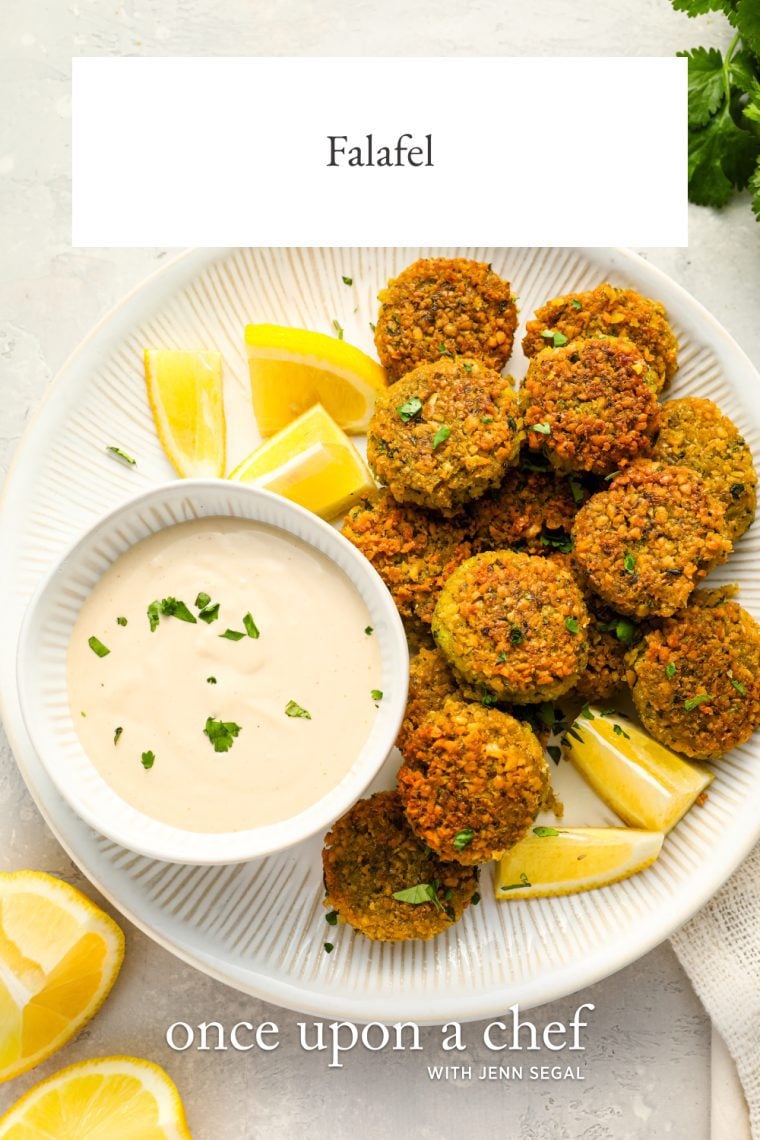
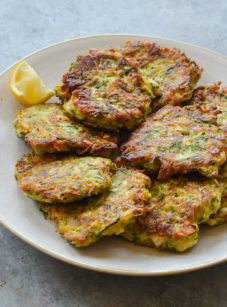
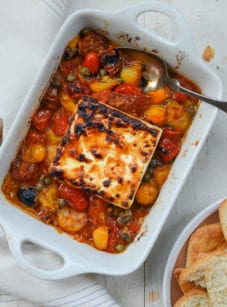
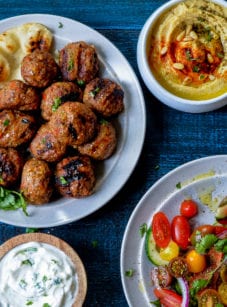

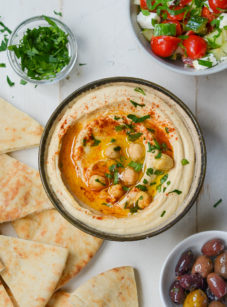
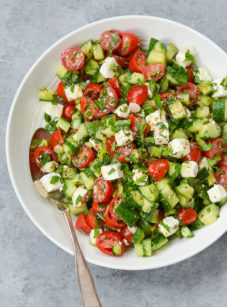
Hi Jenn, Thank you for all of your amazing recipes. I agree with other followers that this is the most reliable food blog to find consistently outstanding recipes. I attempted your falafel recipe about a month ago and agree with other comments that the flavour is outstanding. Unfortunately however I also had trouble with the patties falling apart. I would like to try this recipe again and was wondering if you had found any solutions. I was using a cast iron pan and avacodo oil on high heat. Thank you!
Hi Celeste, I wish I could give you some guidance about how to keep the falafel from falling apart but I’ve made it multiple times without being able to duplicate the problem that some people have (and have done a lot of research to try to determine what tweaks I can make, but I’ve come up empty-handed) — I’m sorry, but I’ll keep at it! (I did remove the recipe from the blog for a period of time because of the issues, but a number of people requested I put it back. It’s definitely a head-scratcher for me that it’s a problem for some but not others!!
I think the problem is they’re not grounding it down enough it should almost be like a paste. Before taking out of the food processor take a bit in your hands and press together to see if it holds it’s shape. Hope that’s helpful
I had trouble with this too. Fixed it by running the mixture longer through my food processor so the chickpeas are more like a thick paste than in chunks. I also found that making the patties flatter helped keep them together.
I am opposed to frying, do you have any suggestions for baking?
Hi Diana, You’ll get the best result by frying the falafel, but if you’d like to bake them, coat a baking sheet with a few Tbsp. of oil and bake them in a 375-degree oven for 10 – 15 minutes per side, or until golden.
I have been following you and making your recipes for over 10 years. This is the first time nothing worked. I tried it 3 times. I love all your recipes, but I too followed the recipe exactly, when I put them in oil they fell apart and did not cook, I made sure the oil was hot, Nothing worked, Each time I made them the same thing happened. Any suggestions why?
Hi Lori, I’m sorry you had a problem with these (3x)! You’re not the only person to experience this. I’ve made these so many times and have not been able to replicate the problem. I’m going to do some research to see if I can determine why some people do.
Maybe try adding some chickpea flour to help bind everything.
Hi Jenn! Made these last night and they were a big hit! My question is do you have any other recommendations as far as the oil used for frying? We did use the vegetable oil but we prefer to cook with other types. Would olive oil or coconut oil work or was there a specific reason why the veg oil was in the recipe. Thanks! We love all your recipes.
So glad you enjoyed them, Maureen! Coconut oil should work well. I don’t use olive oil for frying because it’s expensive and has a lower smoke point. Hope that helps!
I had difficulty getting the falafels to stick
together. So unfortunately they were not very
Successful. I will try again.
I loved being able to throw everything in the food processor, this was easy recipe (since I planned ahead and soaked peas, Although I soaked them a little longer because they still felt firmer than I thought they should’ve been but they were exactly the way they should’ve been I just have never soaked dried chickpeas before), and I had plenty leftovers for a quick snack. Thank you!
Sadly, this was a complete failure for me 🙁 I was possibly foolish to even try as it says “as easy as meatballs” and meatballs are my nemesis. I have tried repeatedly but never successfully made meatballs and always end up in tears of frustration whenever I try. (They never hold together, which was exactly my problem here too.)
I followed the recipe exactly (using dried chickpeas, not canned) and my mixture looked like yours, exactly perhaps a little less lumpy, but my patties lacked any kind of structural integrity. It didn’t seem overly dry or overly moist, though I guess it must have been too much one or the other. I tried to fry some but most fell apart on the way to the pan, and the few that did make it fell apart in the pan while cooking or when I tried to flip them. I tried to bake some in the oven, but those crumbled apart on the baking tray when I tried to flip them, or if I just looked at them funny. I ended up dumping the rest of the mixture into the frying pan and frying it until it was cooked, kind of how I would fry ground meat. The flavour was great, but it had been such a frustrating experience that I didn’t really enjoy my dinner when I finally got to eating it. Definitely not a recipe I’ll be trying again.
Hi Laura, so sorry you had such a problem with these! It’s a head scratcher for me as I’ve made these many times and have not been able to duplicate the problem. I’m going to do some research to see if I can figure out why some people do. Again, sorry these were such a fail!
Laura, my first batch did the same thing. my oil wasn’t hot enough. So make sure your oil is hot and keep it hot. good thing is everything is edible raw, so I put mine in and take them out as soon as they turn brown… success, I hope this helps.
Why would you give this one star, over your frustration. The rating should be based on flavor and you said they were good. I feel you should change your rating because it’s misleading. No offense but this is an easy recipe.
I’m so excited to make this! But just fyi, when I search Felafel on your website, nothing comes up! I had to get creative to find the recipe again!
Hi Ruthie, I think it’s the way you spelled it (with an “e” in place of the first “a” in the word). Glad you found it though and hope you enjoyed!
Dear Jenn,
I’m still on high over an hour later after making your Falafel! One bite and I said – WOW. And I mean wow.
I’m 35 and love cooking and although I had Falafel as a child at home (that my mom tried to re-create after our many travels), I’ve never attempted it. All these years and I’ve never done it. Mom’s was bland and hard (sorry Mom). Mine was green (is that normal?) and amazing!!!! I have a vitamix and not a cusinart blender, and so it MEGA mixed it really fast. So I was petrified that it was too wet!!! (My husband watched the whole process of fear to ecstasy over the Falafel with utter amusement by the way:))I made your Tzatziki Sauce to go with it. I couldn’t find pita, but will try harder next time. The Lebanese bread readily available Down Under was too dry. But your Falafel, I am in love!!!!! Thank you thank you!!!!My children ages 2-12 loved it too! 💖💖
Look up “Chef John’s Pita Bread” recipe. It is simple, easy and you will never want store bought pitas again.
Thank you! Will try!
I could not find dried chickpeas anywhere, so I had to use canned chickpeas. I opened and rinsed the peas then drained and let then air dry in the refrigerator for 24 hours. They turned out better than expected.